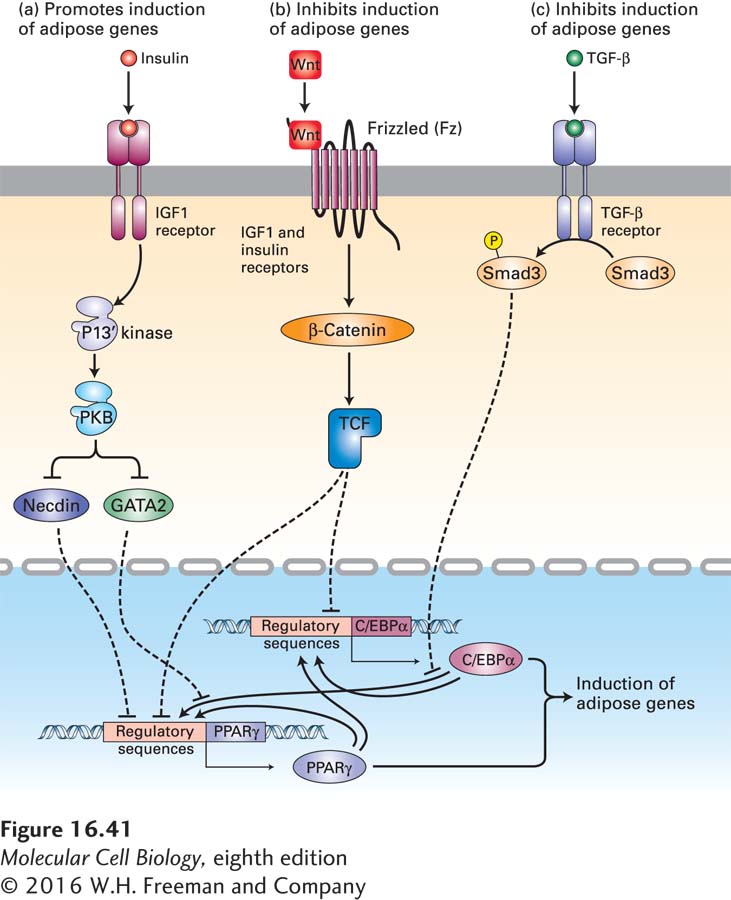
FIGURE 16- 41 Multiple signal transduction pathways interact to regulate adipocyte differentiation. The transcription factor PPARγ (purple) is the master regulator of adipocyte differentiation; together with C/EBPα, it induces expression of all genes required for differentiation of preadipocytes into mature fat cells. Both PPARγ and C/EBPα are induced early in adipogenesis; each of them enhances the transcription of the gene encoding the other (an arrow at the end of a line means enhancement of expression of target genes), leading to a rapid increase in expression of both proteins during the first two days of differentiation. Signals from hormones such as insulin and from growth factors such as Wnt and TGF- β that activate or repress adipogenesis are integrated in the nucleus by transcription factors that regulate— directly or indirectly— expression of the PPARγ and C/EBPα genes. (A T shape at the end of a line indicates inhibition of expression of the target gene.) (a) Insulin activates adipogenesis by several pathways leading to activation of PPARγ expression, two of which are depicted here. Activation of protein kinase B (PKB) downstream of the IGF- 1 and insulin receptor tyrosine kinases leads to repression of Necdin expression; Necdin, by modulating other transcription factors, would otherwise repress expression of the PPARγ gene. PKB also phosphorylates, and thus inactivates, the transcription factor GATA2, which when nonphosphorylated binds to the C/EBPα protein and prevents it from activating expression of the PPARγ gene. By inhibiting two repressors of the PPARγ gene, insulin thus stimulates PPARγ expression. (b) Wnt and TGF- β inhibit adipogenesis by reducing expression of the PPARγ gene. Wnt signaling triggers release of β-catenin from a cytoplasmic complex, and free β-catenin binds the transcription factor TCF (see Figure 16- 30 ). Active TCF blocks expression of the PPARγ and C/EBPα genes, probably by binding to their regulatory sequences. (c) Smad3, activated by phosphorylation following TGF- β binding to the types I and II TGF- β receptors, binds to the C/EBPα protein and prevents it from activating expression of the PPARγ gene. See E. Rosen and O. MacDougald, 2006, Nat. Rev. Mol. Cell Biol. 7:885.
[Leave] [Close]